

Now playing:
Watch this:
Samsung Galaxy Tab S: Premium Android tablet line has…
3:13
Samsung’s fat roster of tablets just got a little bigger — but not by much. The super-slim and lightweight Galaxy Tab S lineup will go on sale in July, but with the panoply of Samsung tablets already available, what’s the big deal?
In addition to the premium pair of Tab S slates, Samsung offers the high-end Note and Pro lines, as well as the simpler Galaxy Tabs — now in their fourth iteration. Each series of tablets comes in a variety of sizes, usually a 7- and a 10-inch, with recent dabbling in the mid-size 8-inch range.
Samsung Galaxy Tab S: Hands-on with Samsung’s newest tablet (pictures)
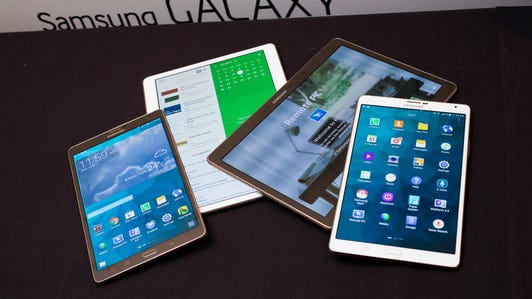

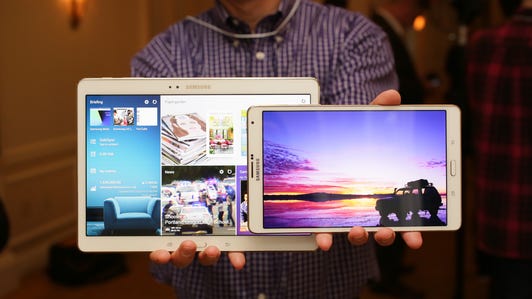



Though the Galaxy tablets share a few things in common, like Samsung’s TouchWiz overlay, IR blasters, and button-filled bottom bezels, each line is subtly different in its approach. Here’s a breakdown of each of Samsung’s premium tablet lineups.
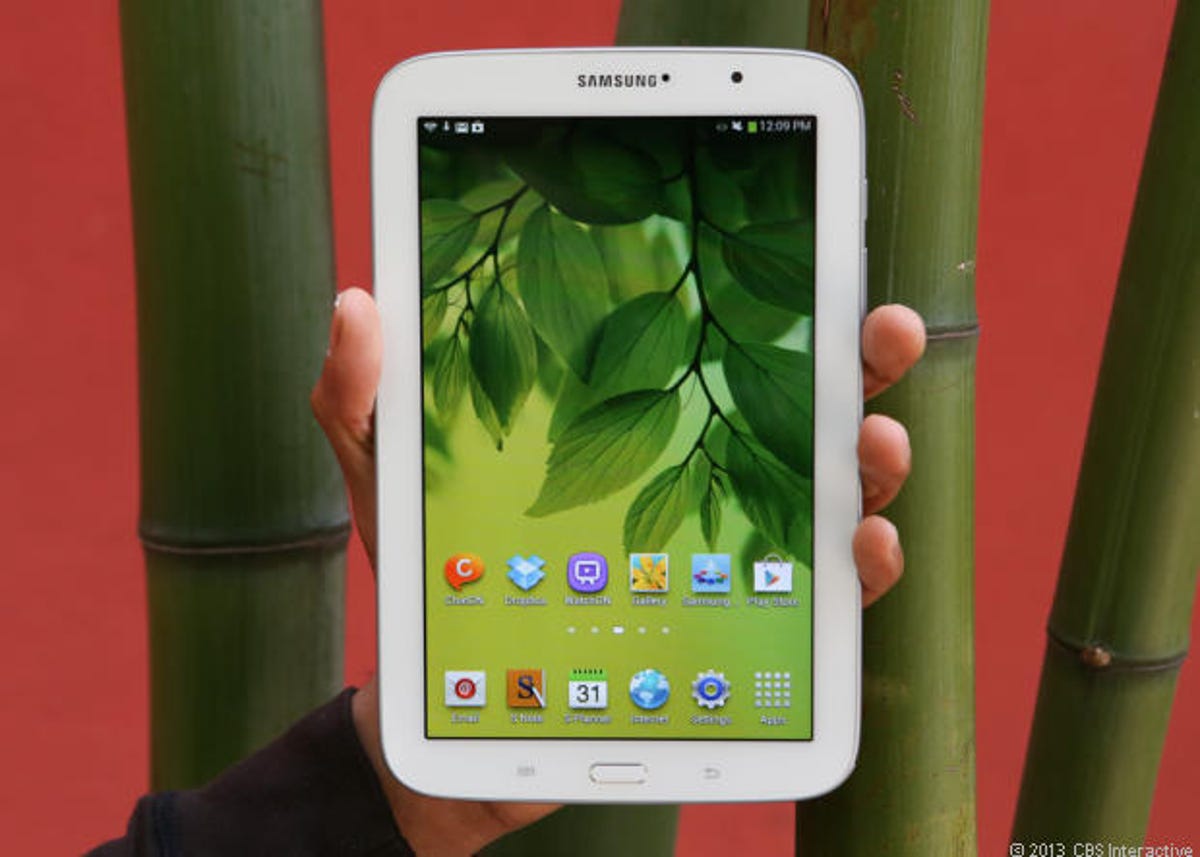
CNET
Galaxy Note
The tablet-sized Samsung Galaxy Notes mirror the successful features of their smartphone counterpart , with productivity-geared software anchored by stylus capabilities. Every new Note model improves on the one before , and better S Pen integration matched with sleeker designs helps you stomach their expensive prices.
The 10-inch model received a welcomed upgrade for 2014 , but the 8-incher hasn’t seen a recent refresh, so when compared to the newer Galaxy Pro and Tab S slates, the mid-size Note has meeker, outdated specs. Despite this, you’ll be hard pressed to find a tablet with similarly useful stylus integration.
Creative types will love the S Pen — there’s even a super-sized 12-inch Note Pro model , if you need a larger canvas — but multi-window capabilities and handwriting recognition technology make the Notes a better companion for a student or writer. Prospective buyers might want to hold off for the eventual re-boot of the 8-inch model , either to get an upgrade in specs, or a better deal on the older model.
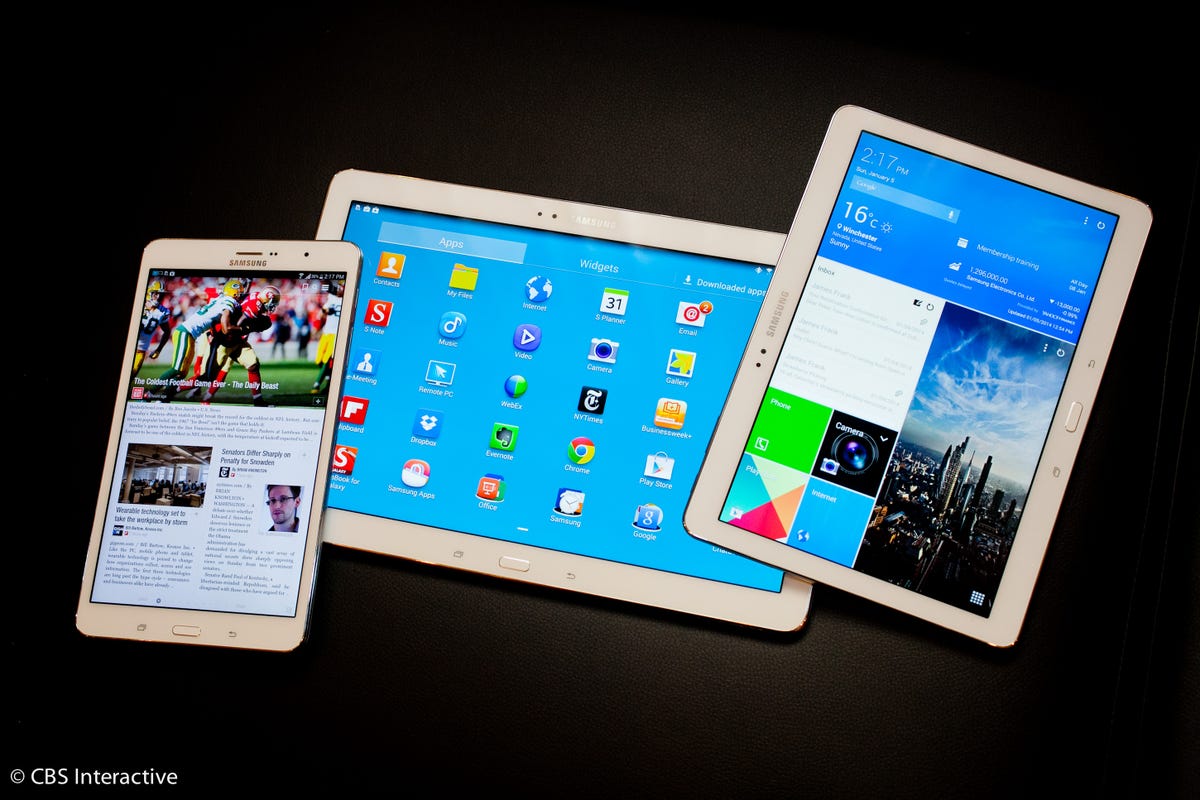

Sarah Tew/CNET
Galaxy Pro
The Galaxy Pro tablets are Samsung’s best response to Apple’s iPad ; they’re some of the most high-end Android-based slates around. There’s no fancy gimmick to them, but the name may just be a nod to how good Samsung is getting at making tablets.
With slim, solid construction, and pixel-packed screens, the zippy Galaxy Pro line lends itself more to play than work, but is highly capable of both. The 8.4-incher is a more attractive buy, taking residence as one of the few premium mid-size slates available, while the 10.1-inch model is eclipsed by better performing — and more affordable — large tablets.
If you want a feature-filled slate with smooth performance, multitasking capabilities, and a super-sharp screen, the Galaxy Pro 8.4 offers a premium experience for a premium price, but skip the 10-incher if you’re in the market for a high-end large slate.
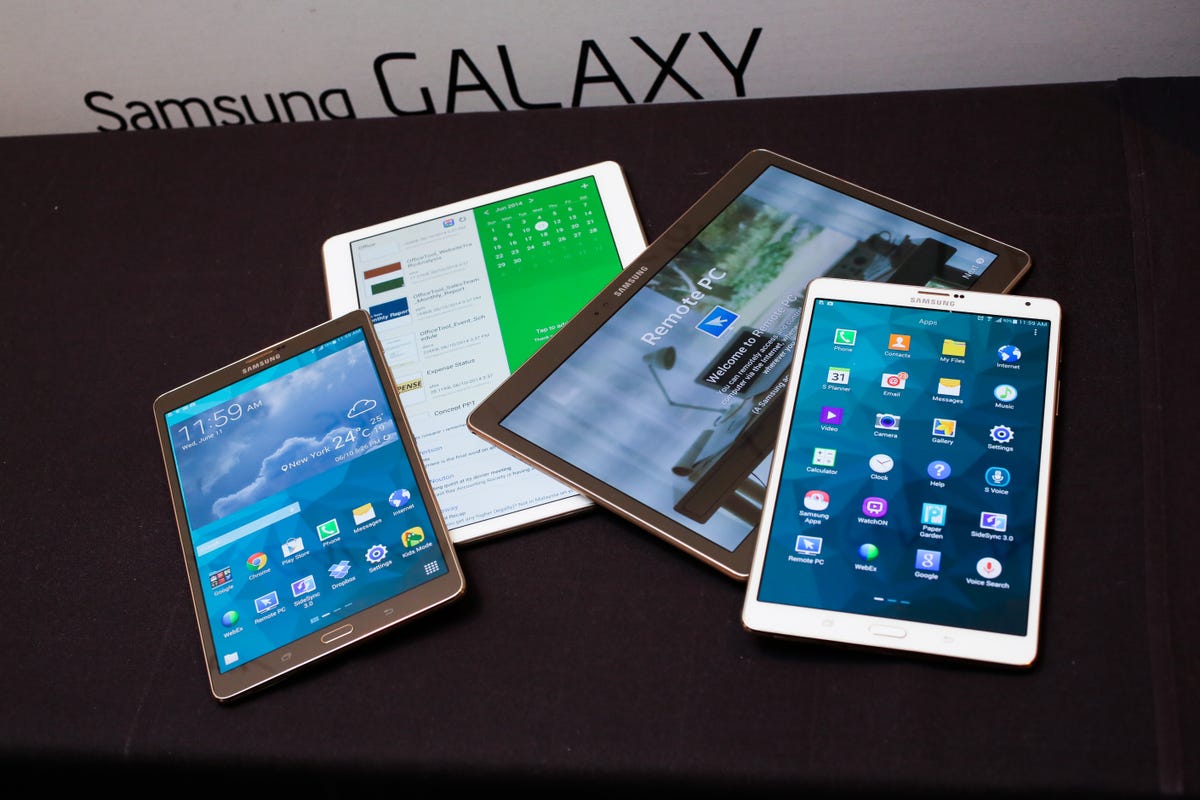

Sarah Tew
Galaxy Tab S
Last, but not least, is Samsung’s latest and greatest flagship tablets. On paper, the Galaxy Tab S lineup looks similar to the Pro models, but their ultra-thin design topped off with a cutting-edge screen sets them apart.
The Tab S slates are the skinniest and lightest in Samsung’s entire Galaxy and, though the screen resolution matches the Pro line, the Super AMOLED screens on the Tab S series struts higher contrast ratios, wider range of colors, and deeper black levels that result in more vivid and detailed images. The display isn’t all beauty and no brains; it can automatically adjust the screen’s settings to optimize your viewing experience in different environments — but it only does this for a handful of native apps.
Movie and TV buffs will love the super-sharp and colorful screen for binge-watching the latest Netflix original programming and, though artists might sway towards the stylus-toting Note tablets, the purportedly accurate colors (90 per cent of Adobe RGB) on the Tab S will appeal more to professional creative types. Also, any gadget-hounds that must have the latest and greatest will appreciate the super-compact designs and colorfully mesmerizing screens on the premium pair.
Samsung introduces the Galaxy Tab S (pictures)
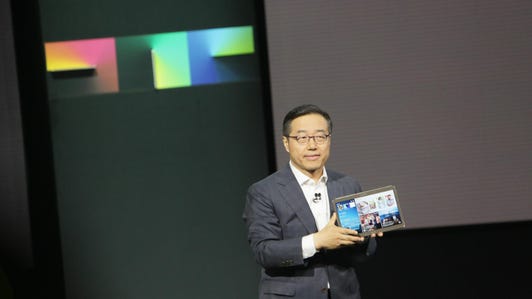

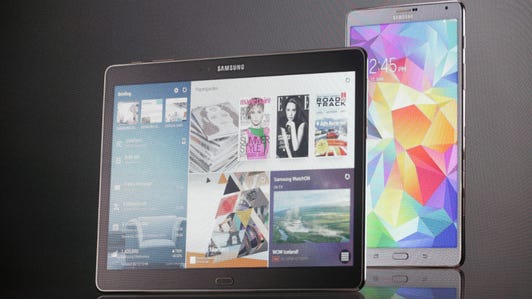

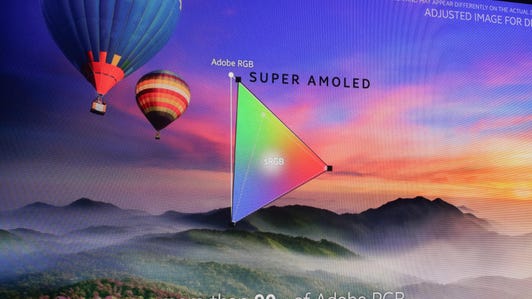

Which one to choose?
Depending on your needs and wants, you can probably find a Samsung tablet that’ll suit you. Pricing starts at the higher end, but with new models released every few months, you can probably find a good deal online.
The lineup of Note tablets should see a refresh this year and, unless you’re looking at the 10-inch 2014 model, you might want to hold off on that big-ticket purchase. The release of the Galaxy Tab S line will probably bring down the price of the Galaxy Pro tablets, making them a tempting option, but if your budget allows, the remarkable screen and sleekest-design-ever of the Galaxy Tab S is as cutting-edge as it gets in the tablet scene.
If you need help parsing through the minutiae of differences between Samsung’s premium tablets, below you’ll find a breakdown of specs for the latest line-ups, categorized by size.
Mid-size (8 to 9 inches)
| Tablet | Samsung Galaxy Note 8 | Samsung Galaxy Tab Pro 8.4 | Samsung Galaxy Tab S 8.4 |
|---|---|---|---|
| Dimensions (inches) | 8.3″ x 5.35″ x 0.31″ | 8.6″ x 5.05″ x 0.28″ | 8.4″ x 4.9″ x 0.26″ |
| Weight (pounds) | 0.73 | 0.73 | 0.65 |
| Processor | Exynos 1.6GHz quad-core | 2.3GHz quad-core | Exynos S Octa Processor (1.9GHz quad-core + 1.3GHz quad-core) |
| RAM | 2GB | 2GB | 3GB |
| Storage | 16GB | 16GB | 16GB |
| MicroSD card capacity | 64GB | 64GB | microXD up to 128GB |
| Front camera | 1.3-megapixel | 2-megapixel | 2.1-megapixels |
| Rear camera | 5-megapixel | 8-megapixel | 8-megapixels |
| 4G | No | No | No |
| Screen size (inches) | 8 | 8.4 | 8.4 |
| Resolution (pixels) | 1,280×800 | 2,560×1,600 | 2,560×1,600 |
| Pixels-per-inch | 188ppi | 359ppi | 359ppi |
| Display type | TFT | scLCD | Super AMOLED |
| Starting price | $330, £215, AU$375 | $400, £270, AU$349 | $400, £319, AU$425 |
Large (10 inches and up)
| Tablet | Samsung Galaxy Note 10.1 (2014 Edition) | Samsung Galaxy Tab Pro 10.1 | Samsung Galaxy Tab S 10.5 |
|---|---|---|---|
| Dimensions (inches) | 9.6″ x 6.8″ x 0.3″ | 9.6″ x 6.7″ x 0.29″ | 9.7″ x 7″ x 0.26″ |
| Weight (pounds) | 1.2 | 1 | 1 |
| System-on-chip | Exynos 5 Octa (1.9GHz quad-core + 1.3GHz quad-core) | Exynos 5 Octa (1.9GHz quad-core + 1.3GHz quad-core) | Exynos 5 Octa (1.9GHz quad-core + 1.3GHz quad-core) |
| RAM | 3GB | 2GB | 3GB |
| Storage | 16GB or 32GB | 16GB | 16GB |
| Expandable storage | microSD up to 64GB | microSD up to 64GB | microXD up to 128GB |
| Front camera | 2-megapixels | 2-megapixels | 2.1-megapixels |
| Rear camera | 8-megapixels | 8-megapixels | 8-megapixels |
| 4G | No | No | No |
| Screen size (inches) | 10.1 | 10.1 | 10.5 |
| Resolution (pixels) | 2,560×1,600 | 2,560×1,600 | 2,560×1,600 |
| Pixels per inch | 299ppi | 299ppi | 287ppi |
| Display type | TFT | scLCD | Super AMOLED |
| Starting price | $550, £400, AU$600 | $500, £380, AU$550 | $500, £399, AU$530 |



